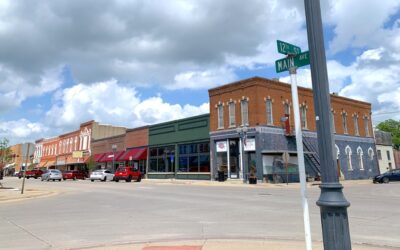Chartered as a land-grant institution by the first regular session of the Nebraska Legislature on February 15, 1869, the University of Nebraska opened its doors to twenty collegiate students and 110 preparatory school pupils on September 7, 1871. University Hall, the original four-story building, had its lumber hauled by wagon from Nebraska City; its brick was made locally.
The Seventh Annual Register and Catalogue of the University of Nebraska, published in 1878, a few years after the school’s founding, informed prospective students of the rules of academic life. Some were similar to modern requirements, and some were quite different. The catalogue noted, “The rules of the University require of every student punctuality at all stated exercises. All delinquencies are noted, and must be excused to the proper officers, and in case of offenses against good order the Faculty will adjudicate the case under the By-Laws made by the Board of Regents for the government of students.
“Students are not permitted to drop any study, or course of study until after the term examination, except with the consent of the Faculty. Students are required to take at least three studies, unless permitted by the Faculty to take a less number. Students are not allowed to absent themselves from town without permission from the Chancellor. Students will be suspended or dismissed whenever, in the opinion of the Faculty, they are pursuing a course seriously detrimental to themselves or to the University. . . .
“Tuition is free in all departments of instruction given in the University, except music, painting, and drawing. An entrance fee of $5.00 is paid by every student at the time of his matriculation. Each student pays $2.00 a term for incidental expenses. This payment is required at the beginning of the term. The cost of boarding in private families is from $3.00 to $4.00 a week. Students may board in clubs, or board themselves, at much less expense.
“Instruction is given in vocal and instrumental music, and in free hand drawing, and painting in all its branches Portrait, landscape, and Frescoingeither in water colors or oil. Tuition in each of these departments is $30.00 a year; or $1 a week for a less period.”
The university building was described as a “substantial and commodious structure of stone and brick, three stories, exclusive of mansard and basement. It contains a chapel 55×70 feet, with gallery; twenty recitation rooms; reading room; rooms for literary societies, cabinet, laboratory, physical apparatus, armory, music, painting, ladies’ receptions, and printing office.”



